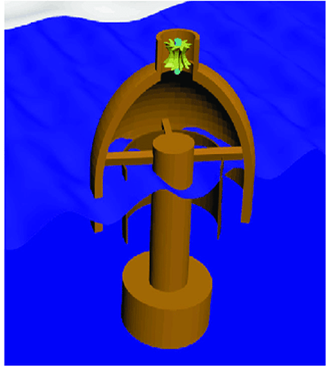The idea is to start with the numerical codes, already developed at CENTEC, for sea-wave interaction with OWC devices and to extend them so that the device behavior in both regular and random wave conditions can be assessed and the impact of each of the chambers' resonant modes on sea-wave energy absorption is evaluated. Linear and non-linear models where the functioning of an impulse turbine is simulated are to be used, as well as the CFD software package OpenFOAM.
These numerical models are employed to optimize the geometry of a dual chamber OWC to be deployed at a point on the Portuguese coast. A quality check on the OWC performance results of these numerical models shall be carried out with the values measured at scale model tests. In these tests models of that optimized OWC geometry will be built at two different scales in LNEC's wave flumes. The two different scales in those tests enable the evaluation of air compressibility influence on the physical model results. The influence of sea-waves incidence angle on the device performance is also evaluated in a wave tank.
The feasibility of including a set of these OWC devices in a harbor protection structure is also investigated in the project.
In addition to the obvious solution of Mutriku, northern Spain, which makes sense for already existing structures, it will be analyzed the inclusion of these devices in new structures, especially in vertical breakwaters. This is another innovative component of the project - the other is the use of the dual chamber OWC - since this is not the solution of choice for ports in Portugal due to the harsh wave climate here.
The five project tasks do provide the adequate framework for these objectives, starting with the selection of the potential location based on the wave climate there (task 1), and ending with the preliminary design of three alternative solutions for the device construction (task 5). This project builds on the experience of the participating institutions:
CENTEC in the field of numerical modeling of wave interaction with wave energy converters; LNEC in the scale model testing of sea-wave effects on coastal structures. The relevance of the project lies on enabling the harvest of renewable energy, using this type of devices to create sheltered areas for port activities, and being driven by a potential deployment location on the Portuguese coast.
 Hydraulics and Environment Department
Hydraulics and Environment Department





